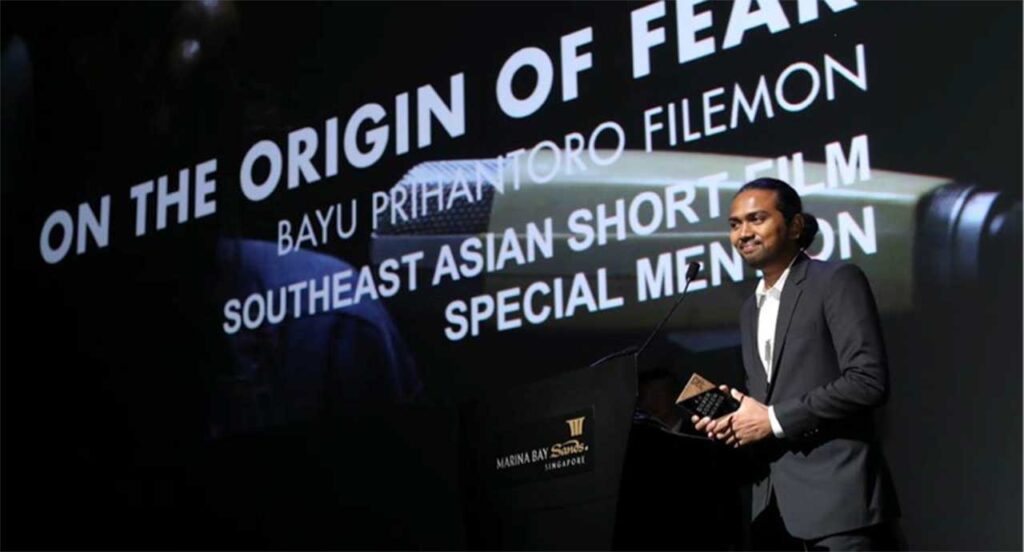The Making Of A Programmer
Musings on programming based on an interview with Lai Weijie and Leong Puiyee, co-programmers for SGIFF’s Southeast Asian Short Film Competition
It’s a tough task to define what Southeast Asia is, let alone to program a selection of short films that best represent filmmaking from the region. Now that the 27th edition of SGIFF has come to a close, I thought it would be a good time to ask the two programmers behind this year’s selection of Southeast Asian Short Film Competition programmes, Lai Weijie and Leong Puiyee, just how they go about this arduous task.

“I think both of us base our initial shortlist of films on pure gut instinct,” says Weijie.
Adding to this, Puiyee explains, “I also feel that the role of the programmer is to draw attention to these shorts that you don’t really get to watch and to also challenge the audience’s notion of what they deem a film should be”.
It’s an interesting combination of answers. On the one hand there’s this notion that a programmer just ‘knows’ when a film is worth shortlisting, but on the other hand there is also this didactic responsibility the programmer takes on to alter the audience’s expectations of a Southeast Asian short film. This back and forth reminds me of the many discussions I had with my fellow Youth Jury and Critics Program members about the shortlisted films. More than just talking about which films we liked, we also gravitated towards identifying which films we thought were ‘award-worthy’, denoting a slightly different category of appreciation. For the most part, though, our responses to the films were indeed a mixture of this ‘gut instinct’ with the pleasure in having our own expectations challenged.

Still, you have to wonder if programmers with years of experience in film would have a more refined feel for films compared to the average film viewer. Outside of SGIFF, Weijie is a film producer with Giraffe Pictures and also produces films with his girlfriend under their company, E&W Films. Puiyee manages the film programs and projects at Objectifs, a visual arts centre that promotes photography and film.
With this in mind, I asked them if they worry about how the films will be received by viewers who may not have as much experience with films from this region.
Puiyee responded by saying, “it does not matter whether there’s a naked body or incest in the films as long as there is something special and the voice of the film is strong.” Ultimately, Weijie summed it up the best by saying that trying to understand the audience is a futile task.
It’s reassuring to know that whether you’re a programmer or not, whether you have seen hundreds of films from Southeast Asia or none at all, film speaks to us at place that transcends all of this. It speaks to us at a place that functions on that ‘gut instinct’. But what I have learned from Weijie and Puiyee is that this ‘gut instinct’ works in tandem with watching something unfamiliar and challenging. After all, would seeing images you are familiar with be as effective in evoking a visceral response to get you to think about things in a new way?

The one question I found myself most compelled to ask was how the programmers define Southeast Asia to begin with, and if there are any films that challenged these definitions.
Although he said he doesn’t really have a definition, Weijie shared how he found it amusing that Anchorage Prohibited (Chiang Wei Liang) was labelled a Taiwanese entry at Berlinale, as was Freeze (Nelicia Low) at Clermont-Ferrard. At SGIFF, both of these films were recognized as Taiwanese and Singaporean entries. So is it just a question of label, then? Is it simply the country a filmmaker tags their film with that qualifies it for submission? Is there really no other unifying factor, visually or conceptually that makes a film Southeast Asian?
I have to admit I did feel a tinge of disappointment at this response, but that impulse made me turn the question back on myself. Do I really know what Southeast Asia ‘looks like’ even though I have lived in this region for 22 years? I realized that I don’t, and perhaps I was disappointed because I was hoping to find my own answers in the programmers’.
But then again, if programmers worked with preconceived notions of how a film should represent Southeast Asia, would we get to see works like Taste (Le Bao) or Demos (Danaya Chulphuthiphong)? Both of these films don’t have an explicitly named setting. Even though there are many familiar visual elements, like the Bánh mì in Taste or the construction sites in Demos, they’re packaged in an entirely unfamiliar wrapping paper. Southeast Asia could then look like anything we want it to look like. Maybe the programmer doesn’t have to have a definition of this region because it may well work against pushing the boundaries with the kinds of films we get to see.
“There’s always so much to learn about the social and cultural issues from each country and every year, there are always some films that surprise and engage you in different ways,” Puiyee says, shedding light on this notion to work against definitions and towards new ways of engaging with film.
Perhaps at the end of the day, the beauty of the programmer’s role is in knowing that they are giving us the chance to see films we wouldn’t get to see otherwise. In doing so, they are vital agents in ensuring that the discourse about what Southeast Asian films are behaves like the tides of the sea, with old waves of ideas crashing at the shore to give rise to new ones.


